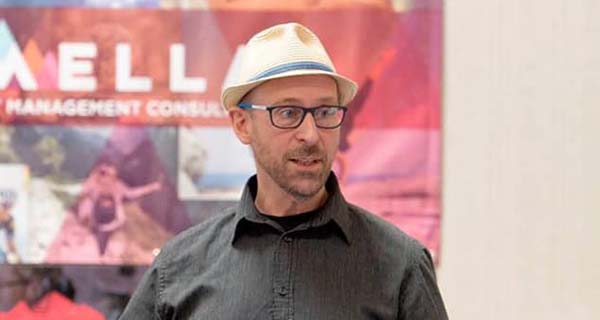Randy Milanovic is CEO of Kayak Online Marketing.

Randy Milanovic
Tell me a little bit about your company – how it started and what you do?
Milanovic: We launched Kayak Online Marketing in 2011. However, its origins date back to the second half of the 1990s when I was working in a number of Calgary’s ad agencies, most notably Highwood. I say notably because I had the good fortune of working under the tutelage of Steve Williams and Jeff Lennard during those years on accounts like Husky Oil, the Calgary Stampede, Chinook Centre and many more. Steve went on to work with Arlene Dickinson and Jeff went on to be one of the top instructors at ACAD. From the two of them, I learned what good creative was.
From a business aspect, I discovered that I didn’t like the traditional agency model. It felt like what I expected an accounting firm would be like. In fairness, I’ve never worked in an accounting firm so it’s pure speculation. That said, it’s not exactly a creative environment.
After leaving Highwood in December 1999, I opened a design firm and ran it for a decade. Right from the start, we began doing things just a little bit differently. For one, we ditched the time sheets. Instead, we figured out the effort it would take to complete a project, put a price tag and anticipated scope on it, and applied a margin. Sometimes we made money and sometimes we lost, but we always paid the bills. We did our best to avoid hourly rate pricing because I hated being valued based on our billable rates. To me, that was vendor talk, not partner talk.
Then in late 2009 near the end of the downturn, I was diagnosed with stage 4 cancer. It was a horrific battle that took a year to win. I returned to almost nothing. Budgets were frozen, print projects were no longer, email and PDF creation seemed to be all that clients wanted because it was cheap.
I was shocked. Not at the lack of work but at the short-sightedness of the business community. It was as if everyone went into hibernation the moment they saw another bust. Having clenched my teeth and swung hard at the cancer for a year, I couldn’t fathom how these big businesses could roll over and play dead the moment they faced a challenge. Every fibre in my being commands me to act when challenged.
As fate would have it, I came across a short but timely blog post by Forrester Research. It talked about three types of digital media – owned (website), earned (social) and borrowed (advertising). Given the only one of the three we have control over is owned, I knew that was where my focus would need to be.
Armed with that, I set out a plan to not only do websites, but to make them the central hub of all business activities. Having almost no business after that year away, I had no choice but to look at growth – I needed new clients. My colleague Paul and I set out a five-step approach beginning with strategy, where we not only identified ideal clients and their influencers, but we decided to dig into each stakeholder’s ‘why,’ creating a conversion offering for ideal clients or their influencers, developing a very specific website structure for lead-generation, optimize all content and, finally, activate the site to generate leads through an experiential learning model where we coach and train clients to be better marketers and salespeople. We’ve refined that process over the years but the roots remain.
Our process is what sets us apart from ad agencies, design firms and and other web agencies. How many businesses leaders expect their agency to ask them why they are in the business, why their customers are customers, and demand to know before executing any creative? My team and I ask those questions, because we know that when we truly understand what makes things tick and why, we can affect change, which leads to real growth. In the absence of purposeful digging, agencies are taking orders instead of providing guidance, checking boxes instead of enabling clients, and allowing themselves to be vendors over partners. That’s not a position I want be in. To allow that does a disservice to clients. We were finalists for Breakout Business and Small Business of the year 2013.
How important is it for companies to adopt some sort of digital marketing strategy?
Milanovic: Hate to answer a question with a question, but what would a business leader say if I asked them how important is it to have a business plan? Or a product pricing plan, or an optimized manufacturing facility layout, or a pipeline to take their crude to market?
All are critical. I’m going to take this one step further and ask why we’d segment ‘digital’ from ‘marketing’ anyway? Why isn’t it simply a marketing plan? Period.
To me, marketing is any activity we do to grease the wheels for sales to sell the stuff that we make.
What are the biggest obstacles in companies embracing digital marketing?
Milanovic: Stakeholder vision. Stakeholder baggage. Stakeholder ignorance.
The traditional agency model started us out with sensationalism – one-off ad campaigns where headlines won awards by dropping f-bombs. People were entertained. Agencies went away and made magic. Clients paid bills. Clients were ignorant of the effort required to do the creative.
If a campaign didn’t perform, the agency was fired and the client went to another agency. It’s a revolving door for the vast majority of agencies that’s only bested by staff turnover between agencies. Often clients worked with the same creative people as they moved agencies in search of raises and promotion.
To this day, agencies still rate on a traditional model: making magic and clients still pay bills. Agencies trained clients to think transactionally and in doing so have remained vendors.
We hear of agencies wanting to be seen as partners but mostly it’s all talk, no action. They still take orders and check boxes. It’s because they’re thinking about the money, not client growth. Not mutual growth. Think about that.
If a company has decided that it wants to embark on the digital marketing road, what are the initial steps it should take and consider?
Milanovic: Change the conversation from ‘done for me’ to ‘done with me.’ Participate in the creative process. Do the research. Network in social, don’t relegate networking to juniors (they don’t have the business acumen or experience). I consider it abdication of responsibility.
Don’t be afraid to build a web page. Production work is not rocket science. Yes, you can do it. Yes, you should do it.
Strategy should be guided by an external team but you already hold the knowledge. Let them coax it out. Look for true partners who are there to help you grow, not just to bill you. Again, true growth is mutual.
Mario Toneguzzi is a Troy Media business reporter based in Calgary.
The views, opinions and positions expressed by columnists and contributors are the author’s alone. They do not inherently or expressly reflect the views, opinions and/or positions of our publication.

